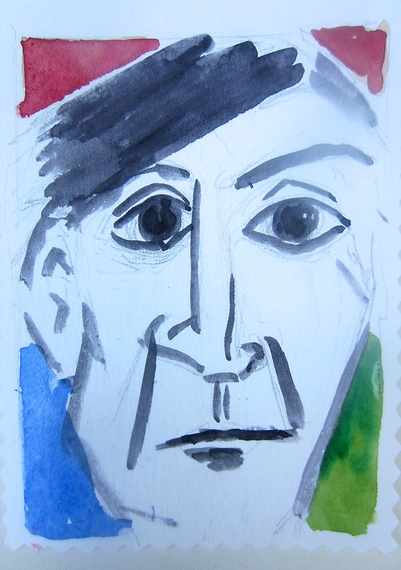Picasso was born in Malaga in 1881 and in l895 arrived in Barcelona, as a young art student. If you'd seen his work for sale on a street corner would you have snapped it up? If it was the painting of his dog Klipper, maybe not, but if you knew anything about art you would have grabbed at two postcard sized paintings exhibited as "Two Rooms" now at the Museum, which contains a collection of 4249 pieces, many from the early stages of his career. The museum was created by Picasso secretary and biographer Jaume Sabartes at Picasso's request and Picasso contributed many works in the collection. Clearly Picasso was one of the world's great Picasso collectors in l960, when he first proposed the idea to Sabartes. Many of the early works on exhibit demonstrate the influence on Picasso of other proto-modernists like Cezanne, Manet and Toulouse-Lautrec. But his portraits and set pieces have an authority which demonstrate his immersion in and understanding of the Old Masters,--something which is exemplified by his "Science and Charity," which was painted in l897 when Picasso was only 15 and which depicts a doctor, nun and infant and attending to a dying woman. The curators quote Picasso himself from his biographer Jaume Sabartes in L'Atelier de Picasso. The subject are the 58 paintings based on Velasquez's "Las Meninas," (1957) which are also exhibited in the museum:
"Suppose one were to make a copy of "Las Meninas" in good faith. If it were me the moment would come when I would say to myself: suppose I moved this figure to the right or a little to the left. If the case arose, I would do it my own way forgetting Velasquez. I would almost certainly be tempted to modify the light or arrange it differently in view of the changed positions of the figures."
Is that ever an understatement! What emerged was a synthetic cubist concerto. It's a homage in the way some of his portraits of his former mistresses are homages and distortions at the same time.
{watercolor by Hallie Cohen)
{This was originally posted to The Screaming Post, Francis Levy's blog of rants and reactions to contemporary politics, art and culture}
